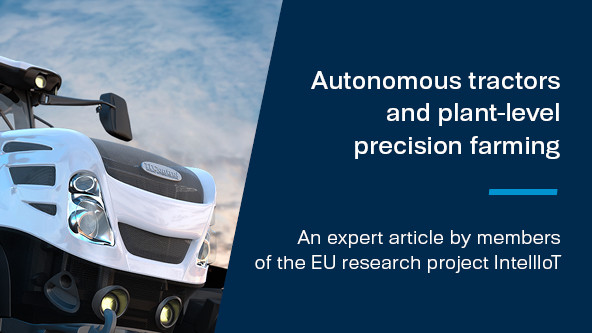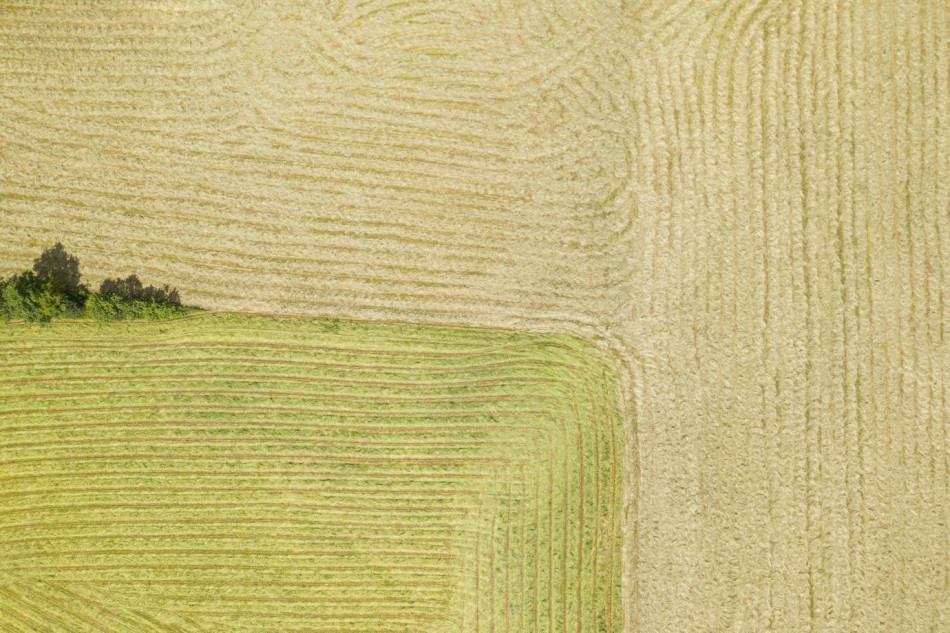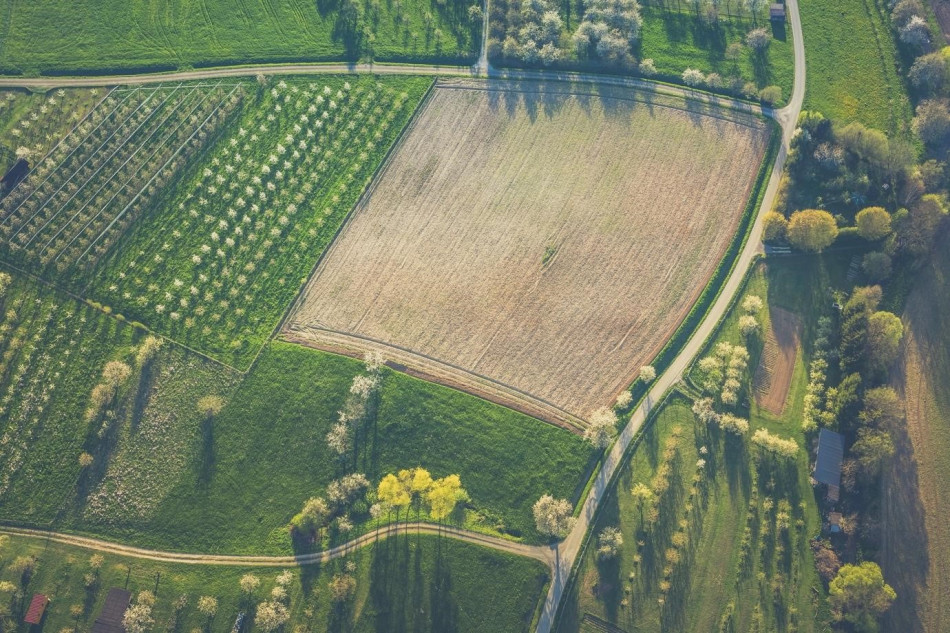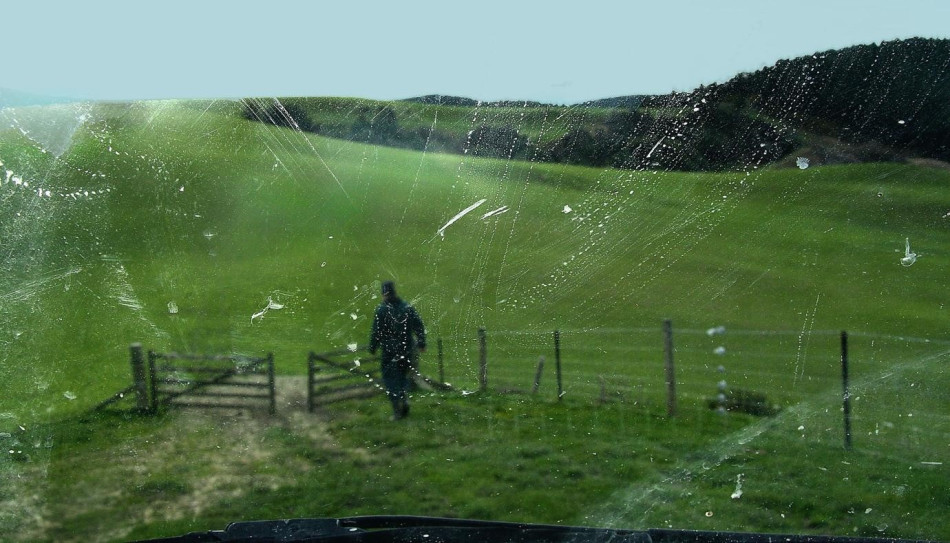
- This article has first been published at medium.com by members of the EU research project IntellIoT -
A perfect storm of opportunity and necessity is brewing on the horizon. How can technologists and farmers harness its power to propel the industry forward and secure the global food chain?

Dawn breaks at the height of the harvest season, and a farmer rolls out of bed at the cock’s first crow. She fills her thermos with coffee and heads out — not onto the fields or to the barn, but instead to her office, where, from the relative comfort of a desk chair, she kicks off a long day of harvesting grain. From her computer monitor, the farmer directs a fleet of autonomous combines out of their parked storage units and onto the early morning fields. Equipped with 360-degree cameras and state-of-the-art sensors, the machines are ready to cut and thresh at the direction and discretion of their remote overlord. If something unexpected happens — say, a wayward heifer hampers progress — the farmer can, by donning augmented reality goggles and figuratively taking the reins, deftly guide the machines along an alternate route.
Sounds far-fetched? Far from it. Agriculture is set to transform dramatically in the coming years, as technologies such as automation, artificial intelligence (AI), machine learning (ML), and edge computing unlock game-changing opportunities for new tools and ways of working in the business of feeding the world. There’s a seismic shift underway in agritech, one that may very well determine the health and stability of the global food chain as it faces unprecedented challenges, including climate change, exploding population growth, and urbanization. With these megatrends looming on the horizon, it’s the newest, cutting-edge technologies merged with one of the oldest professions that just might save us all.
The original innovators
“Even if we are an old profession, we are not old-fashioned,” explains Max Schulman. The seasoned farmer lives in the south of Finland, where he is just the latest caretaker in a family line that reaches back more than 400 years. “Farmers have always been using technology. It’s nothing new…just look how many farmers today have a smartphone. We use it to look at the market. We use it to look at the weather forecast. We do our banking…we are more connected than quite a few other groups in the world.” At the mercy of the whims of weather and blight, the farmer has always required adaptability, ingenuity, and innovation. It should come as no surprise, then, that the widespread stereotype of a simple country life is wildly inaccurate — and that farmers are strong and willing partners for the tech industry.
Doing more with the same (or less) will be the name of the game in coming years, as questions of population growth and extreme weather, compounded by dwindling numbers of farmers and disappearing arable land threaten the security of the world’s food supply. “The problems we take on are too big to be solved by one person alone,” explains Sandro Castronovo, Tech Lead at the John Deere European Technology Innovation Center. The Fortune 500 manufacturing monolith is building products that leverage machine learning to enable precision agriculture, one ongoing trend in agritech that makes it easier for farmers to optimize their operations and increase ROI, despite rising costs. “Our product innovations transitioned from ‘bigger, stronger, faster’ to ‘automated, easy to use, and more precise’…artificial intelligence allows equipment to manage at a plant level in real time and will be a transformative force in agriculture.”
To illustrate the power of AI to revolutionize the industry, Castronovo highlights John Deere’s See and Spray™ Select, a newly-launched tool for spot spraying. It builds upon the John Deere ExactApply™ foundation and, by using camera technology, can detect color differentiation on fallow ground, thereby targeting only weeds. Such precision technology puts “doing more with the same (or less)” into the realm of real possibility: in this case by reducing herbicide use on average by 77%.
Harvesting data for a bumper crop
The ability to identify and spray one plant among hundreds of thousands is just one example of the potential to leverage AI on board farming vehicles and tools, where smarter decisions can be made on the machine in real time. But what happens when this data, collected on the field, is then streamed to the cloud? “Off-board AI could be a game changer,” explains Castronovo. “It could create a prescription for the next year, telling [the farmer] where to seed more with the seeding machine, or fertilize.” With statistically significant data from the field harvested to the cloud and geospatially mapped, farmers could make smarter agronomic decisions, enabling savvier land use and more efficient deployment of additives such as fertilizer.
Preserving resources while optimizing yields — again, helping farmers to “do more with less” — is also the daily business at GeoPard Agriculture. The Cologne-based startup has developed a precision agriculture platform to support farming operations in making smarter decisions around land use and crop management.
By merging historical georeferenced data sets such as yield, soil, satellite, and topography, GeoPard’s prescription maps enable a precision agriculture approach for the most heterogeneous fields, spotting unstable vegetation zones, incorporating data from ground sensors, and even detecting clouds and shadows. By applying AI and ML to its multi-layered analytics, GeoPard’s API is a powerful tool to help farmers increase their ROI and boost productivity by selectively applying seeds, fertilizers, herbicides, and fungicides thanks to a more sophisticated understanding of the profile of each field.
But while the potential for mapping technology is enormous, GeoPard faces some significant challenges in realizing its mission of creating perfect maps for agritech. Co-founder Dmitry Dementiev explains that while his team can access free, high-quality satellite data, “without publicly available data storage on soil that any startup can access, this is a big challenge…we could provide huge advantages to growers and even more services if the local field data is shared with us by the growers.” By merging existing datasets with additional information from specific private fields, GeoPard’s models would only increase in precision and enable further land use optimization.

As you sow, so shall you reap
So where is the data, and how can Dementiev, and other technologists, get some? Agritech faces two main barriers to adequate and diverse sources of data collection. First is a reluctance on the part of the farmer to allow access to their data. This is an understandable position to hold, argues Schulman: “Farming is our business. If you have something that you would like to keep for competitive advantage, then you would keep it and not share it just like that…it’s important to remember that with information and data, whether created on the farm or the field, there is always someone that is the owner.”
Ownership and security are familiar concerns when it comes to debates surrounding data use. So what would convince a farmer to upload their crop yields or soil nutrient measurements to the cloud? “The main thing is that the farmer, the producer of the data…whatever has happened on his soil, on his fields, with his animals — he controls it. It’s his, and that’s it,” explains Schulman. And while sharing data with the manufacturer of an autonomous tractor as part of a sales contract, for example, is understandable, the Finnish farmer goes on to emphasize the importance of transparency: “You should know what you sign up for…it’s the openness that creates trust. And trust and transparency, they go hand-in-hand.”
From the fields to the cloud
The last thing a company wants to do is sow distrust among its customers and target market. So how can teams that are working on agritech solutions gain farmers’ trust and buy-in? “The most important thing when you work on new technology and develop it, when you are in the phase where you have the first workable prototype ready, is bringing in the end-user, the farmer,” emphasizes Schulman. “Let him use the device or technology. Listen to him. Make sure that when you do it, you do it for the customer, the farmer. He knows his business, even if everybody thinks it’s simple and easy, that anybody and everybody can farm. Unfortunately, it is not that simple.”
Including the end-user as a central stakeholder in product development provides an invaluable perspective to those developing agritech solutions: the farmer arguably knows their land, its operation and idiosyncrasies better than anyone else. But even if farmers are eager to share their data and benefit from a smarter, more precise practice for increased profitability and efficiency, there are other, more practical barriers standing in the way. Which brings us to the second factor that hogties data collection in the agricultural sector: woefully inadequate connectivity infrastructure in rural areas across the continent. Without 4G or 5G connection, there’s no way for smart, autonomous machinery to connect to the cloud from the field, where machines are meant to not only communicate with one another, but also share data to off-board systems. With investments in infrastructure, however, the sky’s the limit for data collection and implementation of AI- and ML-powered tools out on the fields.
On March 11, 2021, innovation experts from IntellIoT along with Startup Colors and the Meetup.
Ai Berlin community hosted an online event dedicated to the future of agritech.
The tractor of the future is already here
While smarter farming and precision agriculture are both ways to mitigate the challenges headed our way, there are a few bumps in the road, not least of which is testing solutions out in the field — literally. Consider our farmer with their (as yet imaginary) remote-control autonomous combines: “A highly demanding task for [us] will be the complete integration in a single, edge-based platform on an agricultural vehicle in order to make it more intelligent. A very innovative approach involves a human operator taking direct control of the vehicle from a remote location,” explains Dr. Martijn Rooker, the Vienna-based Innovation Projects & Funding Manager at TTTech Group. TTTech Group and HYDAC International established the joint venture TTControl, a leading supplier specializing in safety controls, displays, and connectivity solutions for off-highway vehicles, such as tractors and other farm machines.
The vehicle in development, a semi-autonomous tractor, will be equipped with new processing power so that the whole vehicle operates as an edge device in itself. This tractor would interact with other machines on the field — drones, sensors — and when it encounters an unknown situation, a human operator can step in and assist. Through this human interaction, the operating system will update its internal knowledge, effectively learning what to do next time, increasing safety, efficiency, and productivity. Because the tractor would connect to cloud solutions, its area of operation not only requires 5G communication capabilities, but also its hardware and software must be robust enough to withstand grinding and gritty field work. “I had the pleasure of joining a farmer in a harvester,” said Rooker, “and there’s so much dust sometimes you just can’t see. When you’re harvesting crops, they’re flying around.”
For everything there is a season
Developing new agricultural hardware that is robust enough to withstand harsh conditions requires rigorous, time-consuming, and resource-intensive work. Testing, validation, certification — this is a long and complex process, and in agriculture, much of the work is limited to particular seasons throughout the year (not to mention the unpredictable weather). And while larger enterprises may have the resources to accommodate this, startups such as GeoPard must adopt strategies that account for the fact that hypotheses can’t be tested at the same speed as is often expected by tech investors.
Add to this the need to adhere to governmental regulations, and it becomes very clear that although the opportunities are vast and the need will only grow, from idea to launch in agritech it requires time, and lots of it. “The thing is,” explains Schulman, “adopting technology in such a big, primary sector as farming — we are many farmers in Europe — it takes time. The biggest worry is that people want it to happen too fast. [But] give us time and we will do it — and make clear to policy-makers that when you make a policy, it’s for the long term.”

Trading silos for collaborative solutions
For innovative solutions in agritech to succeed and address pressing questions such as food security, there are many forces at play. Stakeholders including corporations such as John Deere, startups like GeoPard, tech firms like TTControl, government authorities, and farmers themselves seek ways to connect and collaborate. That’s why TTControl has partnered with the EU research project IntellIoT as its leading agricultural use case and will test and develop their control units for use in semi-autonomous remote-controlled farming vehicles, such as the aforementioned tractor. As part of the Horizon 2020 initiative, IntellIoT’s mission is to enable the execution of semi-autonomous IoT applications for AI-enabled systems. The consortium’s projects aim to overcome limitations of traditional cloud-centric IoT such as unreliable connectivity, privacy concerns, or high round-trip times.
Wanted: Farmfluencers and Data Fans
For data scientists, especially those focused on machine learning and AI, the sheer amount and potential power of agricultural data is tremendous, and a space with room to experiment. “It’s a perfect sandbox…multiple data sets, different economic questions of what data could be valuable and which is useless,” says Nicholas Borsotto, AI and Data Consultant, and founder of Berlin-based meetup.ai.
For those technologists who seek to connect with agritech industry players, TTControl and IntellIoT issued an open call for SME and startup partners whose technology would contribute to the consortium’s pilot projects building agritech solutions. Learn how to participate.